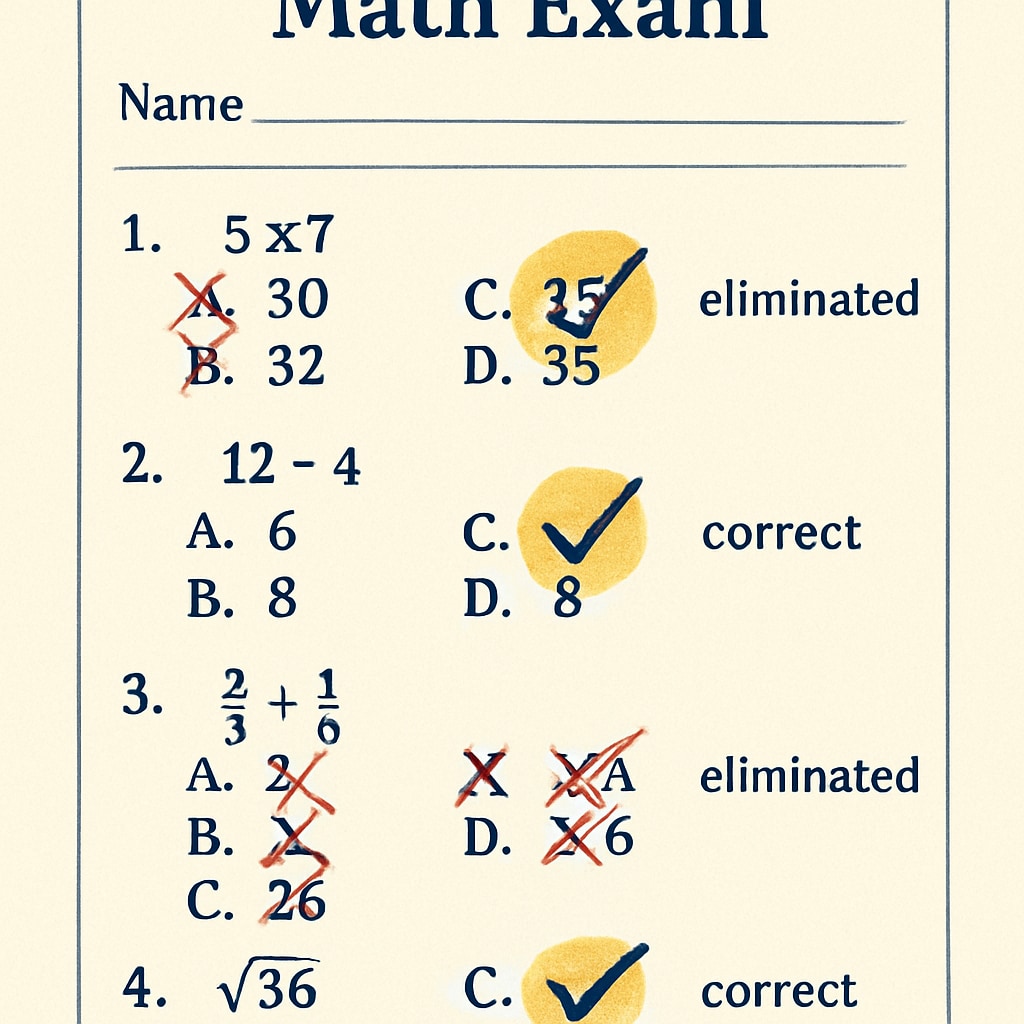Math anxiety, multi-choice questions, and exam pressure can feel overwhelming for students, especially those already struggling with confidence. For many high schoolers, this anxiety can make even the simplest problems appear insurmountable. In this article, we explore the psychology behind math-related stress and share actionable strategies to tackle multi-choice math exams with confidence.

Understanding the Roots of Math Anxiety
Math anxiety is more than just a fear of numbers; it’s a psychological response that can trigger physical symptoms like increased heart rate, sweaty palms, and even nausea. According to research from the Encyclopedia Britannica, this type of anxiety often arises from negative experiences with math in the past, societal stereotypes, or a lack of foundational skills. For multi-choice questions in particular, students may feel intense pressure due to the higher stakes of selecting multiple correct answers.
Consider the case of Lily, a 17-year-old transfer student who struggled with math anxiety after joining a competitive school. For Lily, multi-choice questions were a nightmare because one wrong choice often meant the entire answer would be marked incorrect. This fear of failure became a self-fulfilling prophecy, as her anxiety would cloud her judgment during exams.
Practical Strategies to Tackle Multi-Choice Math Questions
To help students like Lily regain control over their test-taking experience, it’s important to focus on both mental preparation and technical strategies. Here are some evidence-based tips:
- Break Problems Down: Multi-choice questions often combine several concepts. Break the question into smaller parts and solve each step individually.
- Eliminate Obvious Errors: Use the process of elimination to reduce options and narrow down potential answers.
- Practice Time Management: Allocate specific time limits for each question to avoid spending too much time on one problem.
- Learn to Skip: If a question feels overwhelming, skip it and return later. This prevents unnecessary stress from derailing your momentum.
These strategies not only help in multi-choice exams but also build overall mathematical confidence, which is essential for long-term success.

Psychological Techniques to Reduce Math Anxiety
Overcoming math anxiety requires more than just exam strategies—it involves addressing the mental blocks that fuel the fear. Here are some psychological techniques to consider:
- Cognitive Restructuring: Replace negative thoughts like “I can’t do this” with positive affirmations such as “I’ll do my best.”
- Mindfulness and Relaxation: Practice deep breathing or mindfulness exercises to calm your nerves before and during the exam.
- Visualization: Picture yourself succeeding in the exam. This mental rehearsal can boost confidence and reduce stress.
- Seeking Support: Work with teachers, tutors, or counselors who can help you strengthen your math skills and address your fears.
As Lily began practicing mindfulness and reframing her thoughts, she noticed a significant improvement in her focus and performance. She also sought help from her teachers, which allowed her to clarify concepts she had previously feared.
Turning Fear into Mastery
While math anxiety can feel like an insurmountable challenge, it is possible to transform this fear into an opportunity for growth. By combining mental strategies with practical exam techniques, students can gradually rebuild their confidence and approach math exams with a sense of control.
For students like Lily, the journey from fear to mastery starts with small steps. Each successful attempt to silence self-doubt and embrace problem-solving is a victory worth celebrating.
Math anxiety, multi-choice questions, and exam stress don’t have to define your academic journey. With persistence, support, and the right tools, you too can conquer your fears and thrive in even the most challenging tests.
Readability guidance: This article is structured with clear headings and concise paragraphs to enhance clarity. Practical strategies and psychological insights are summarized in lists for better comprehension, and transitional words are used to maintain a smooth flow.


